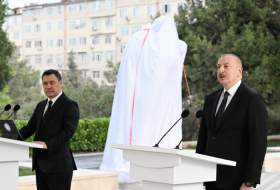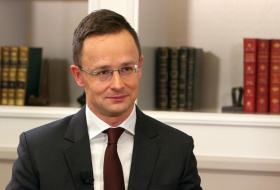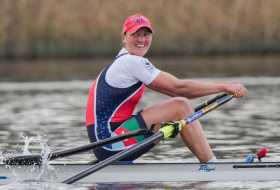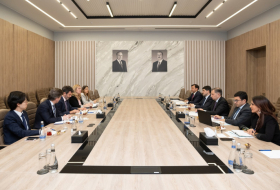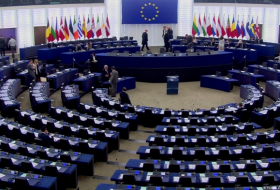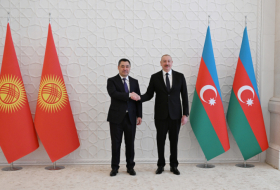We can know when a handshake feels wrong, but it can be hard to put a finger on exactly why. If it lingers too long, is too firm or pulls us too close it can define the rest of an encounter.
Donald Trump and Emmanuel Macron walked side by side, their hands clasped together. They remained in each other’s vice-like grip, tugging, patting and fawning at each other for 29 seconds as the world’s media looked on.
Occurring during a parade for French National Day – the anniversary of the storming of the Bastille, a turning point in the French revolution – it could have been a moment of solidarity between the leaders of two great nations. Instead, it turned into one of the most awkward, lingering handshakes in recent memory. Without being able to hear what they discussed as they pressed themselves close to each other, their body language became a surrogate for the sentiment.
A good greeting in this situation might have involved lots of eye contact and positive body positioning. “The best way to approach is to create equality,” says Sanda Dolcos, a psychologist at the University of Illinois.

Donald Trump and Emmanuel Macron demonstrated everything a handshake should not be during their awkward exchange in Paris (Credit: Getty Images)
“What is important is to have an open approaching attitude, not to show dominance,” adds Florin Dolcos, her colleague at the University of Illinois. “One way is to reach out with your hand palm up.”
But the handshake between Macron and Trump seems to break every rule that we know to be normal. While barely a fraction of the World Record for longest handshake – set at 43 hours, if you are interested – the interaction between the two presidents was excruciating and those watching could feel every second of it.
It starts fairly innocuously. Macron takes Trump’s hand, begins to pat him on the back and the two start walking. After five seconds, Trump pats Macron’s right hand as if to say “That’s enough”. Macron misses the cue, intentionally or otherwise, and at eight seconds, Trump halts dead in his tracks. If Macron is not playing his game, Trump needs to change the game.
“Usually in the moment you realise whether the person is in discomfort and it is normal to retract after a few seconds,” says Sanda. But neither retracts.
The two face each other and transition to what Florin calls a “brotherly” handshake; Macron has his left hand on Trump’s right arm. Trump wiggles his hand from side to side – but still no release. Trump goes to greet and kiss Brigitte Macron while still shaking his counterpart’s hand. The three now all hold hands in a strange three-way embrace which lasts a few more seconds before the whole interaction fizzles out.
“The handshake sets the tone of the conversation. He was really aware of the fact that everyone was analysing his behaviour,” says Florin. “It was not something that came naturally.”

The right handshake during a job interview can make a difference – facing your palm up is one way of not showing dominance (Credit: Getty Images)
But what was this strange greeting saying exactly? And what effect does breaking handshaking conventions have on subsequent meetings? Scientists like the Dolcos are interested in answering these questions because they are useful for researching interviews, deals, investments, retail habits and more. Handshakes are a sign of agreement, mutual respect or a simple hello. But they can also come loaded with meaning and aggression.
Keep it firm
When it comes to handshakes, firm is best. Firm handshakes have been linked positively to extraversion and emotional expressiveness and negatively to shyness and neuroticism. They have also been associated with openness to new experiences in women. Equally, limp, wet handshakes are almost universally disliked.
A firm handshakes in a job interview can increase your employability, especially among women. This is true even after controlling for differences in physical attractiveness (which universally increases your chances of being employed) and the clothing of the candidates.
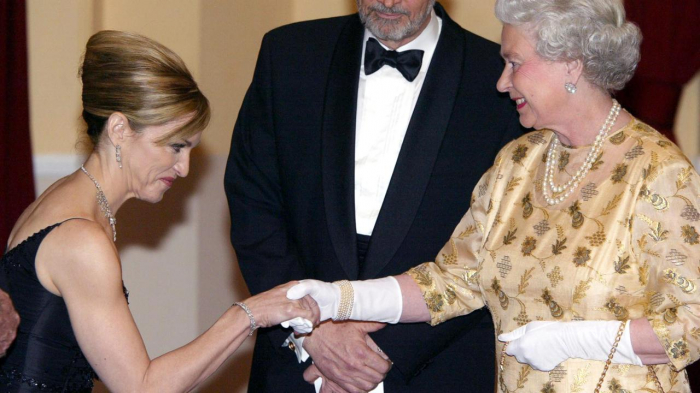
Queen Elizabeth II shakes a lot of hands during her royal duties but almost always wears gloves when out in public (Credit: Getty Images)
Macron and Trump have a bit of history when it comes to intense, firm handshakes – in some cases, even leaving marks on one another. Whether there is such a thing as a too-firm handshake is unclear. “If your hand is like a dead fish, no firmness, it shows lack of interest. Or if you shake until you break it will tell me bad things about you,” says Florin.
Don’t let it linger
A handshake not only conveys your level of extraversion, expressiveness and employability to an interviewer, but also helps you learn about the person you are meeting too. A good handshake has the potential to put interview candidates at ease. Likewise, a bad one can set them up for an awkward encounter.
The abnormal length of the handshake between Macron and Trump might show that they are very familiar with one another, but between strangers it can lead to an uncomfortable conversation afterwards.
In one study, interviewees were filmed and had their body language analysed after experiencing abnormally long handshakes that left interviewees “frozen”. In the subsequent interview, they displayed anxious behaviours and were less likely to laugh or show signs that they were enjoying themselves.
Add a caring touch
In another context, and between different people, the touch that Macron makes on the arm of Trump could have surprising effects. Touching a hand on the back of someone’s arm can provoke them into making risky decisions, suggests Jennifer Argo, a professor in marketing at the Alberta School of Business, but only when the person greeting the potential risk-taker is a woman.
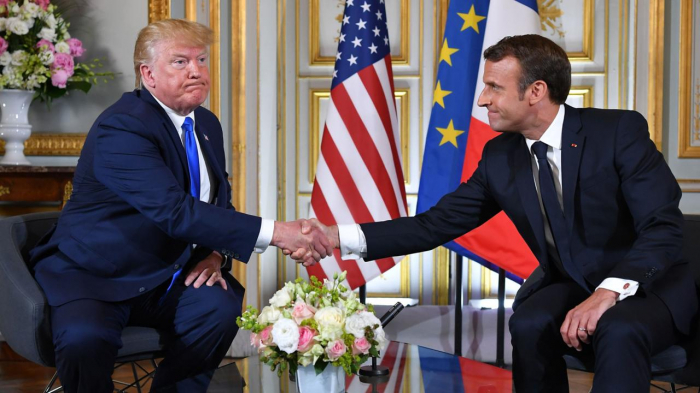
Donald Trump and Emmanuel Macron have a bit of a history when it comes to intense handshakes (Credit: Getty Images)
Participants in her study were business school students who were asked to make financial investments. They were greeted on arrival by either a woman or man who proffered a hand with or without a “guiding touch” on the back of the arm, or by no hand at all. Investors who were greeted by the woman and guided into the room made the riskiest decisions of all.
“The feeling of a gentle touch on the shoulder suggests security – it is reminiscent of someone caring for you,” says Argo. “When you are more secure you take more risks, different kinds of risks and invest more.” The researchers’ suggestion is that this kind of caring touch is associated with our mothers in childhood, and that explains why the same effect is not seen when the greeter is a man.
The idea that a motherly embrace could provoke us into making riskier financial decisions is interesting, if hard to believe. Might it just be that the physical contact from the woman is being misinterpreted as sexual attraction by the investors, leading to risk-taking behaviour? A famous study from the 1970s highlighted the possibility of “misattribution of arousal” – where one mood is incorrectly interpreted as attraction. In this study, fear and anxiety were misinterpreted as sexual attraction.
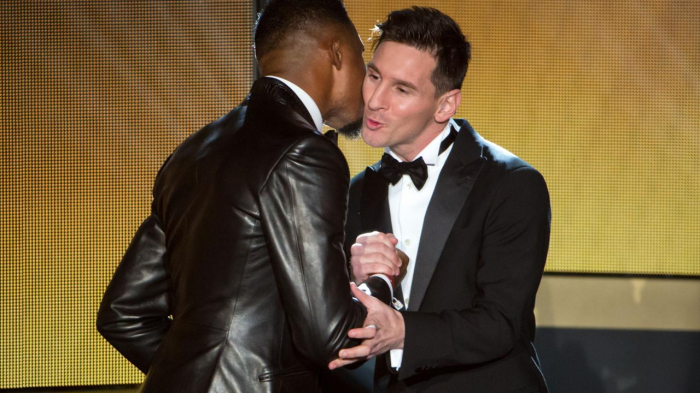
Argentinian footballer Lionel Messi demonstrates just how familiar the handshaking style in his home country can be (Credit: Getty Images)
Men were asked to cross one of two bridges. The first, a sturdy bridge, the second a suspension bridge that swayed threateningly when someone walked across it. At the end of the bridge, an attractive male or female interviewer asked the men to complete a questionnaire and offered them their name and phone number, under the premise of answering any queries they might later have about the experiment. The men who crossed the swaying suspension bridge and were greeted by an attractive female interviewer were more likely than any other group to take up the offer of giving her a call. The researchers attributed this to the raised blood pressure and heart rates of the anxious men being misinterpreted as signs of arousal.
Might a similar thing be happening with the investors? Argo says not. The risk-taking effect was seen equally in both male and female investors when greeted by the woman and with neither when the greeter was a man. “The female experimenter was also not super attractive – she was an average person,” adds Argo. “We didn’t use incredibly attractive people.”

Shaking hands might be a way of picking up subconscious signals about the other person (Credit: Getty Images)
Argo suggests this might have meaningful effects in other areas outside of investments, like retail, where a guiding touch by a retail assistant might lead you towards an expensive product.
Maintain a safe distance
Trump and Macron are almost chest-to-chest towards the end of their shake. In most countries around the world, it is normal even for very close friends to keep at least 30cm between themselves during a social encounter. But this prolonged embrace is particularly unusual for an American like Trump, where the norm is closer to 50cm. This is assuming the two men consider each other to be close friends. Acquaintances in the US are more likely to keep 69cm between themselves, and strangers 95cm. This study did not look at data from France, but their neighbours in Spain and Germany report similar figures to their American counterparts.
Saudi Arabia ranks as the most standoffish, where it is normal to keep over 95cm away from a close friend; and Argentina is one of the most familiar countries, where only 70cm separates strangers.
The purpose of getting up close to a counterpart might be to elicit further information that we are only aware of subconsciously, in the form of scents. We constantly sniff our own hands, but after a handshake we do it even more so – specifically with the right hand, the one we use for greetings. In one study, by covertly monitoring hand-to-face touching after a handshake, and even fitting some participants with nasal catheters to monitor airflow, researchers proved that handshakers were actively sniffing their hands rather than just raising them to their face.
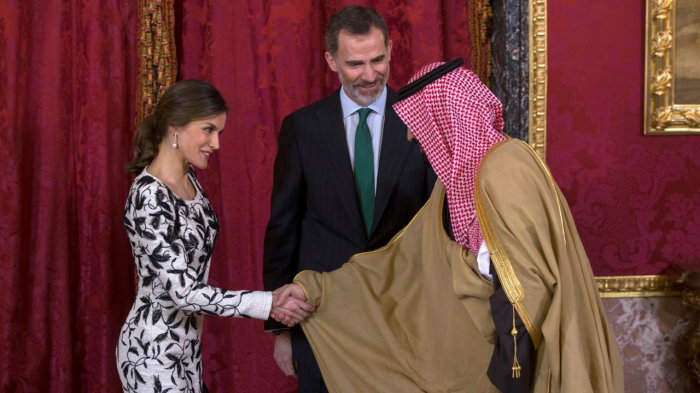
People in Saudi Arabia keep the most distance between them and people they are shaking hands with (Credit: Getty Images)
Next, they had some subjects wear sterilised gloves while shaking hands and then analysed the chemicals left on the gloves to find out what the handshakers were sniffing. Two of the chemicals found included squalene and hexadecanoic acid, which are known to play a role in social signalling in dogs.
"Handshaking is already known to convey a range of information, depending on the duration of the gesture, its strength and the posture used," says Noam Sobel, a neurobiologist at the Weizmann Institute of Science, Israel, who led the study. "We argue that it may have evolved to serve as one of a number of ways to sample social chemicals from each other, and that it still serves this purpose in a meaningful, albeit subliminal, way."
Add a fake laugh
Macron and Trump grin furiously as they continue to embrace. Clearly, they are aware of the assembled media, so to what extent these smiles are authentic is debatable. It is possible to decipher when a smile is inauthentic because traces of muscle movements associated with faces expressing disgust, fear or sadness can be seen through the happy “mask”. These subtle cues might be incredibly small, but we are still able to pick up on them.
The two leaders might have been better off bursting into laughter, because fake laughs are almost as good as a real ones. Laughter helps us to strengthen social bonds and fake laughter is enough to make us more likeable (although real laughter is always more effective).
For an added bonus, we are more willing to disclose personal information after sharing laughter with an acquaintance. So, a fit of fake laughter might have helped the two to open up.
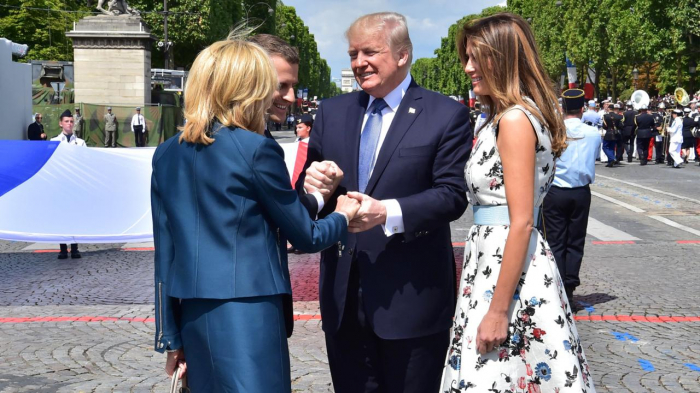
Donald Trump and Emmanuel Macron's National Day Parade handshake turned into a bizarre three-way hand clasp (Credit: Getty Image)
Meanwhile, Trump does one of the most unusual parts of the whole act. While still shaking Emmanuel Macron’s hand, he greets Brigitte in a way that is completely to be expected for two Western business people of the opposite sex. Westerners tend to default into gender-specific roles when it comes to greetings. In business, the expectation is always for men to shake hands, but when men greet women and women greet each other, cheek kissing is more often the norm. So, while the overly-familiar embrace with Macron continues, Trump is simultaneous able to kiss Brigitte in a normal way.
The normal number of kisses varies between countries and even between regions within countries. Whereas for non-Western businesspeople, while handshaking is increasingly common as Westernisms become incorporated into business culture, kissing between men, or bows and no physical contact might be the norm.
The oddness of Macron and Trump’s handshake is perhaps a lesson in how not to greet someone. For two politicians who spend their careers meeting people, it is possible that they are so aware of the customs and conventions that they intentionally flaunt them to communicate to their audience. But who knows if they understand the full meaning of their subtle interactions.
BBC
More about: handshake








